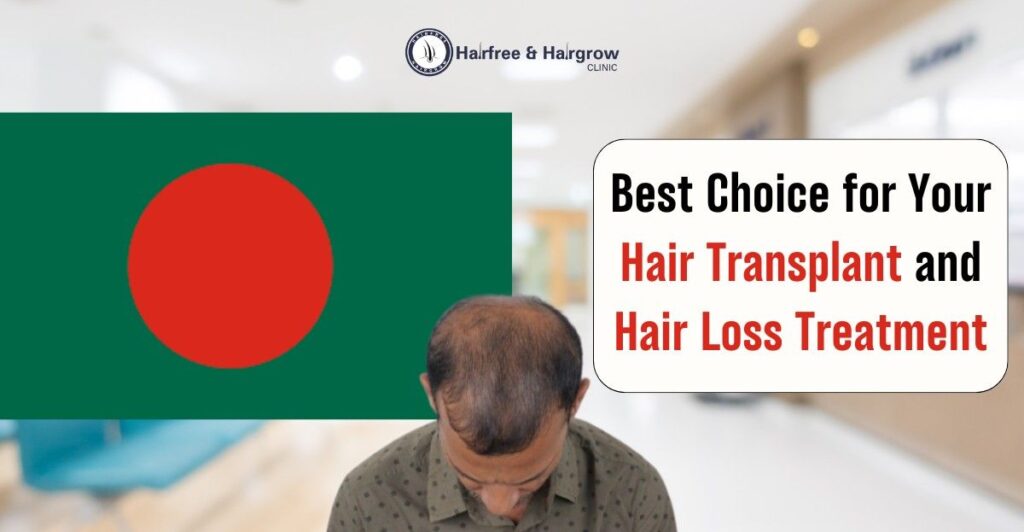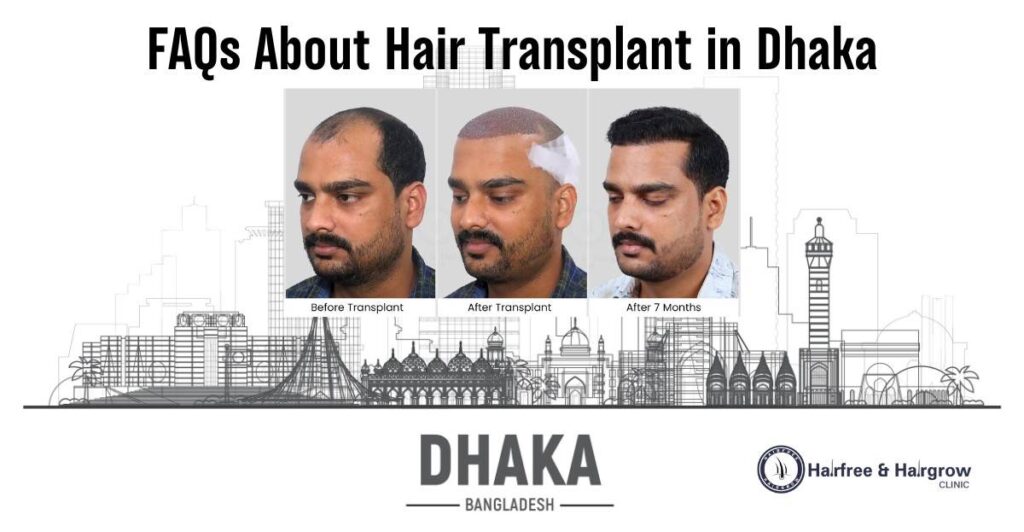Hair transplants have become a popular solution for hair loss, offering people a chance to regain confidence. Like any medical procedure, however, it’s essential to understand the potential risks and side effects of hair transplant. If you’re considering a hair transplant in Bangladesh, knowing the possible complications will help you make an informed decision.
Table of Contents
Immediate Side Effects After Hair Transplant
- Swelling and Redness
After a hair transplant, some swelling and redness are common. This swelling usually starts around the hairline and can spread to the forehead or even the area around the eyes. This is a natural response to the procedure and typically subsides within a week. Following your surgeon’s instructions and resting after surgery can help manage this swelling. - Pain and Discomfort
Hair transplant surgeries are done under local anesthesia, so there is no pain during the procedure. However, once the anesthesia wears off, you might feel mild discomfort or pain in the treated area. Pain-relief medications prescribed by your doctor can help manage this discomfort. - Bleeding and Scabbing
During the surgery, tiny incisions are made on the scalp, which may cause some bleeding. After surgery, small scabs might form around the hair follicles. It’s essential to keep your scalp clean and avoid scratching, as this can disrupt healing and potentially lead to infection. The scabs generally fall off in about a week, taking a few transplanted hairs with them—a normal part of the process.

Post-Surgical Infections and How to Avoid Them
Infections are a rare but serious side effect of hair transplants. Clinics in Bangladesh should ensure a sterilized environment and proper surgical hygiene to avoid infection. However, because of the humidity in Bangladesh, patients must be especially cautious to follow their doctor’s aftercare instructions.
Potential Causes of Infection:
- Inadequate sterilization of equipment
- Poor post-surgical care by the patient
- Unhygienic conditions in the clinic
Prevention Tips:
- Choose a clinic with experienced, certified surgeons who follow strict hygiene protocols.
- Follow post-op instructions, such as using prescribed antibiotics, to avoid infection.
Shock Loss: Temporary Hair Loss Post-Transplant
After a hair transplant, some patients experience “shock loss,” where the transplanted and even surrounding natural hair may fall out. This is a temporary condition and should not be a cause for concern. Shock loss is common after transplant surgeries, and new hair growth typically begins in a few months.
Must Read –
| Daily Hair Loss: Why Am I Losing More Hair Than Usual? |
| Is Daily Hair Wash Good or Bad? |
Long-Term Scarring: Minimizing Visible Marks
Scarring is a potential long-term side effect, especially at the donor site (usually the back or sides of the scalp). Most scars from a hair transplant are minor and may fade over time. However, there are certain types of scars you should be aware of:
- Scarring at the Donor Site
In both Follicular Unit Extraction (FUE) and Follicular Unit Transplantation (FUT) techniques, small scars can form in the donor area. FUE usually leaves tiny dot-like scars, while FUT might leave a linear scar. Scarring can be minimized by selecting a skilled surgeon. - Scarring at the Donor Site
Some people have a tendency to develop keloid scars—raised, thick scars that may appear at the donor or recipient sites. People prone to keloids should discuss this with their doctor to explore preventative measures.
Itching and Dryness of the Scalp
Itching is one of the most common side effects following a hair transplant. This occurs as the scalp heals and scabs form. Keeping the scalp clean and using a recommended mild shampoo can help control itching. However, scratching should be avoided, as it can damage the grafts and increase the risk of infection.
Folliculitis and Inflammation
Folliculitis is a condition in which small cysts, resembling pimples, form around the transplanted follicles. It occurs when hair follicles become inflamed, often because of bacteria. Though this condition is usually mild and resolves on its own, it can be treated with antibiotics if it becomes severe. Proper scalp hygiene can help reduce the risk of folliculitis.
Conclusion
Hair transplants are generally safe and effective when performed by experienced surgeons in well-equipped clinics. Minor side effects like swelling, itching, and scabbing are common, but they are manageable and usually resolve within a few weeks. However, taking proper precautions, including choosing a reputable clinic and following post-operative care instructions, can help minimize serious risks like infection and scarring.
If you’re considering a hair transplant in Bangladesh, make sure to choose a reputable clinic like Hairfree & Hairgrow Clinic. They offer skilled surgeons, modern facilities, and a strong commitment to patient care, ensuring that your journey to restoring your hair is safe and successful.
Ready to Restore Your Hair?
If you’re looking for a safe and reliable hair transplant experience in Bangladesh, consider Hairfree & Hairgrow Clinic. With experienced surgeons and advanced techniques, they’re dedicated to helping you achieve the best possible results. Contact them today to schedule a consultation and take the first step toward a confident, new look!
FAQ
Yes, swelling is a common side effect that usually resolves within a week. Following post-operative care instructions can help reduce the severity.
Yes, as long as you choose a certified clinic with experienced surgeons. Hairfree & Hairgrow Clinic in Bangladesh is a trusted choice for safe and effective hair transplants.
Infections can result from unsterile equipment, poor post-op care, or inadequate hygiene at the clinic. Following your doctor’s aftercare guidelines is essential to prevent infection.
Yes, shock loss is temporary. Hair usually begins to grow back within a few months after surgery.

Written By
Medical Officer & Hair Transplant Surgeon
Dr. Nazmin Sultana Nipa is a distinguished hair transplant doctor in Bangladesh, known for her advanced skills in hair restoration. As a Medical Officer and Hair Transplant Surgeon, Dr. Nipa combines her extensive experience in the field with a focus on transparency and patient-centered care.
Disclaimer
We’ve made all possible efforts to ensure that the information provided here is accurate, up-to-date and complete, however, it should not be treated as a substitute for professional medical advice, diagnosis or treatment. See Detailed Disclaimers Here.



